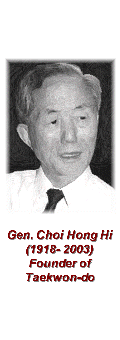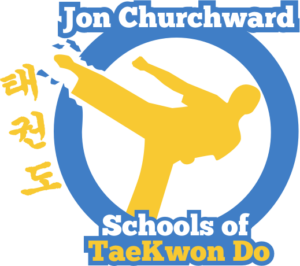What is Taekwon-do
Taekwon-do is a modern Korean Martial Art of Self-Defence. “Tae” means to kick or smash with the foot, “Kwon” means to punch or destroy with the hand or fist and “Do” means an art or way.
Taekwon-do is much more than kicking and punching. It is a form of self defence that is a complete non-violent discipline of entire body training and character building.
History of Taekwon-do
“On April 11th, 1955 , the name Taekwon-do was officially adopted for the martial art General Choi Hong Hi had developed using elements of the ancient Korean martial art of Tae Kyon and of Shotokan karate, a martial art he had learned while studying in Japan .
The philosophical values and the goals of Taekwon-do are firmly rooted in the traditional moral culture of the Orient. On the technical side, defensive and offensive tactics are based on principles of physics, particularly Newton’s Law, which explains how to generate maximum force by increasing speed and mass during the execution of a movement.
Always striving for excellence, General Choi presented Taekwon-do as in a state of continuous evolution, open to changes that would improve its effectiveness. He wrote that anyone who believes he has fully discharged his duty will soon perish. Likewise, any undertaking that is perceived to have reached its objectives is likely to lose momentum, stagnate, and die.
On March 22nd 1966 General Choi founded the International Taekwon-do Federation with about nine member countries. In present day the ITF touches almost every country around the world and has over 30 million practitioners. Sadly General Choi passed away on 15th June 2002 but the legacy of his philosophy and training secrets live on under the guidance of the ITF.
Since the beginning, Taekwon-do has never stopped evolving, driven by the strong will and a lot of hard work by its Founder. The leaders of the ITF today also recognize the need to evolve and they are equally passionate about the future of the organization. “












